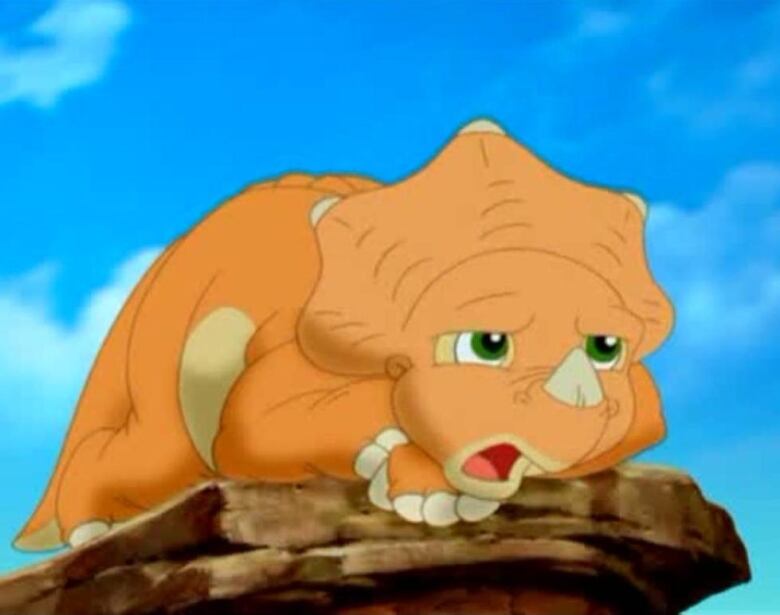Baby Chasmosaurus skeleton helps Alberta scientists understand dinosaur evolution
Only complete baby Chasmosaurus skeleton in the world unlocks mysteries for research team

Baby, you're the one.
The discovery of the only complete baby Chasmosaurus skeleton in Alberta has helped researchers understand how the species aged and more about the evolution of other horned dinosaurs, like the more well-known Triceratops.
The little bundle of joy entered the world 72 million years ago, but it was in 2010 that University of Alberta paleontologist Phil Currie found the skeleton in Alberta's Dinosaur Provincial Park.
Currie believes the dinosaur was about three years old when it died.
"It's a very cute little dinosaur, it has a short face, big eyes and the jaws are quite a bit shorter than the adults," Currie said. "It's very much like human babies in a way."

Cute or not, Currie has another reason for being interested in this particular baby dinosaur. While researchers have found thousands of adult horned dinosaur specimens throughout North America, the baby skeleton is a rare find, he said.
"That's always been an area where we get a bone here and a bone there, but no skeletons," he said. "That's always meant that we knew the babies were around, but we didn't know what they looked like."
The biggest surprise for Currie and his research team was on the skull of the baby Chasmosaurus. A frill on head of the baby Chasmosaurus is smaller and has a different shape than on the adults, suggesting the shape of the frill changes as the animal ages. The findings will help scientists understand and calculate the dimensions and body weight of other ceratopsid species, a family of horned dinosaur.
Currie said this finding is essential to future research in the area.
"Unless you've got that basic anatomical information, you're kind of shooting in the dark with all of these other calculations," he said.
The research team's findings were published this month in the Journal of Vertebrate Paleontology.
Next, researchers intend to look at the baby Chasmosaurus through a special CT scanner in Japan to learn more about its brain case.












_(720p).jpg)


 OFFICIAL HD MUSIC VIDEO.jpg)
.jpg)



























































































